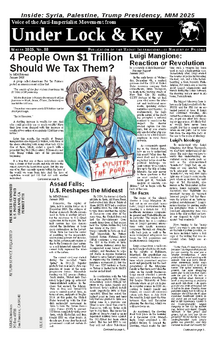
North Carolina Prisoners' Preliminary Victory on Use of Force Lawsuit
On 27 March 2014, a Federal judge in the United States District Court issued an order requiring prison staff to record any use of force, should force be required on a prisoner.
Some other prisoners and I filed a lawsuit because the pigs at Central Prison in Raleigh used blind spots in the current video system to hide from surveillance so they could beat prisoners. We also informed the courts of the “lack of policy for proper method of investigation in any use-of-force incidents.”
As a result, Judge Terrance Boyle appointed an expert (former corrections administrator Eldon Vail) to review the prison’s surveillance system. Based on several problems he found, he made five recommendations.
North Carolina Department of Public Safety (NCDPS) prisons adopted four of the recommendations but said using a hand-held video camera is not feasible and placed “undue burden upon Central Prison.” However, on Thursday, 27 March 2014 Judge Boyle ordered the fifth recommendation be adopted. His order stated “…defendants are placed on notice that if there is not voluntary compliance and implementation of the recommendation, a preliminary injunction will ensue.”
The pigs deny any abuse, saying they used minimal amounts of force required to deal with prisoners characterized as the “worst of the worst” among the prison system’s population.
Still the state agreed last year to install more security cameras to cover previously unmonitored areas. But Vail’s report said the new cameras still don’t monitor all the blind spots where prisoners say the abuse occurs. Vail also reported finding lenses so out-of-focus and smudged with grime that it was difficult to make out what the camera was recording.
The recommendations made by Vail that must be followed are:
-
Adjust each camera that demonstrates a pattern of “freezing” to improve
motion detection sensitivity.
-
Establish a written preventive maintenance schedule for lens cleaning,
camera refocusing and replacement of faulty cameras.
-
Install additional cameras to view the sally ports of each cell block in
Unit 1.
-
Modify the video surveillance retention policy and procedure to clarify
the responsibility to provide notice to the video retention officer to
preserve a video by the unit supervisor from the investigator’s
responsibility to request a copy of the video for the investigation.
- Change the use of force policy, SOP 4.100, to require that a handheld video camera operator respond to the scene of spontaneous use-of-force incidents and that a camera remain on until the event is over and [prisoner] has been safely placed in a cell.
This fifth recommendation means that during an anticipated use-of-force (any use-of-force) a hand-held camera will be used until a prisoner is no longer in contact with the pigs.
We are now getting ready for a pretrial conference. But we are one step
closer to getting justice. We have at least made the prison safer. Now
the pigs will not have anywhere to hide.
MIM(Prisons) adds: This update to the ongoing legal battle in North Carolina is good news for this carefully planned and hard fought legal battle. We know that often we cannot win when fighting abuse by employees of the criminal injustice system in their own courts. But sometimes the courts have to pretend objectivity and, when presented with facts that show the NCDPS is violating their own laws and policies, we can win some improvements to conditions. While the courts won’t be where we make revolutionary change, for now we can use them as one tool to struggle against abuse. We must always accompany these court battles with publicity and education about the case, using them to expose both the brutality we are fighting and the injustice when the courts rule against us.
Related Articles:This article referenced in:








